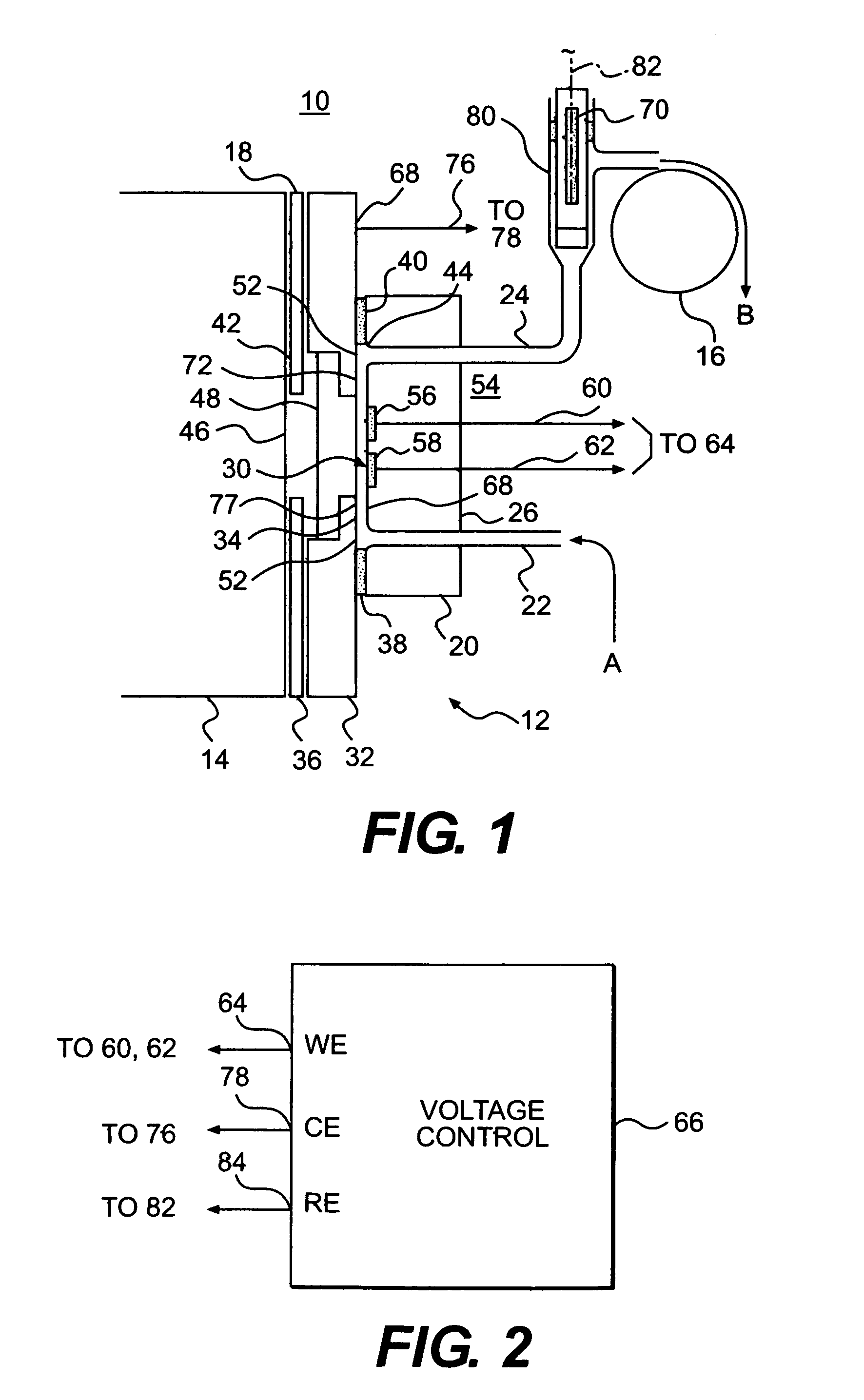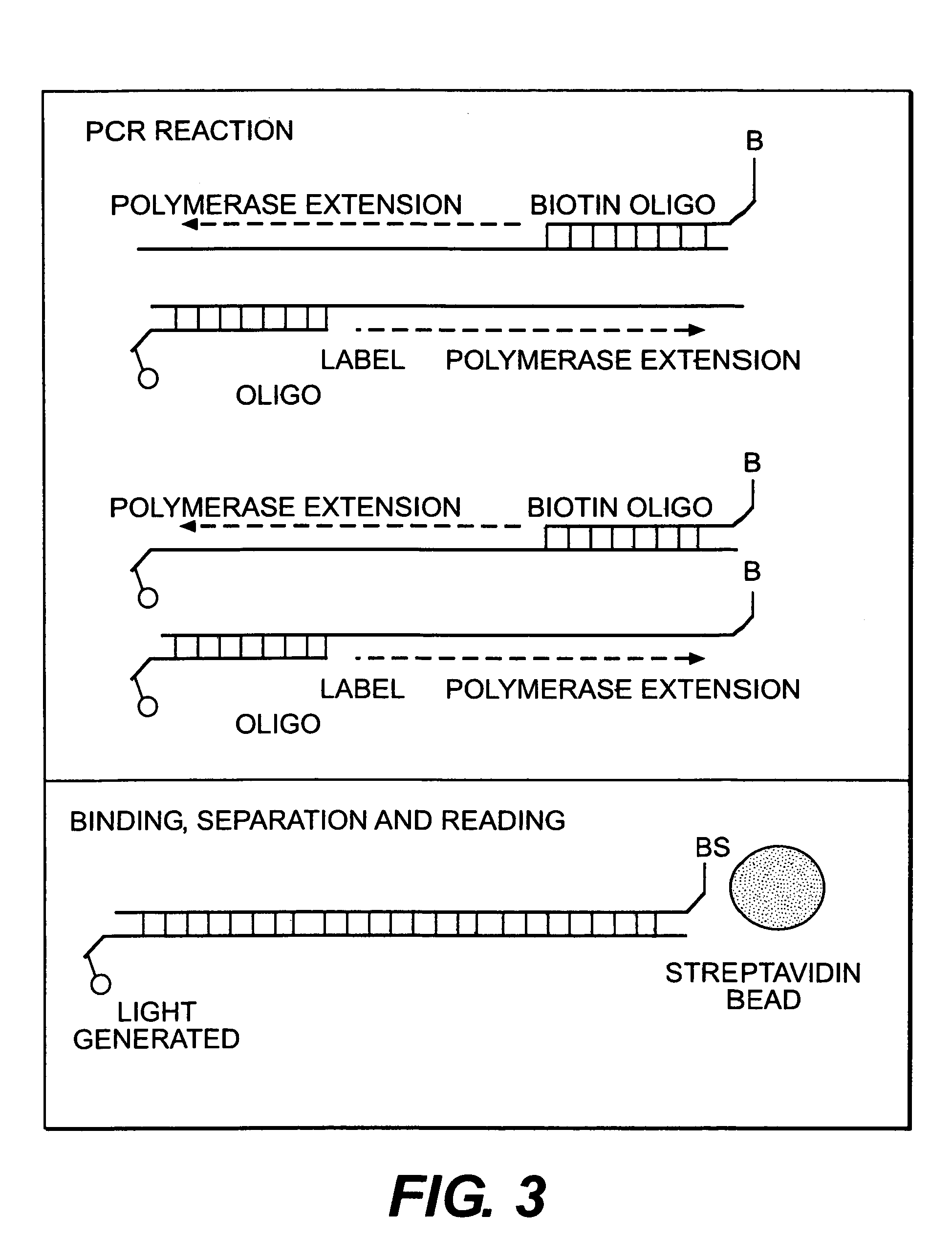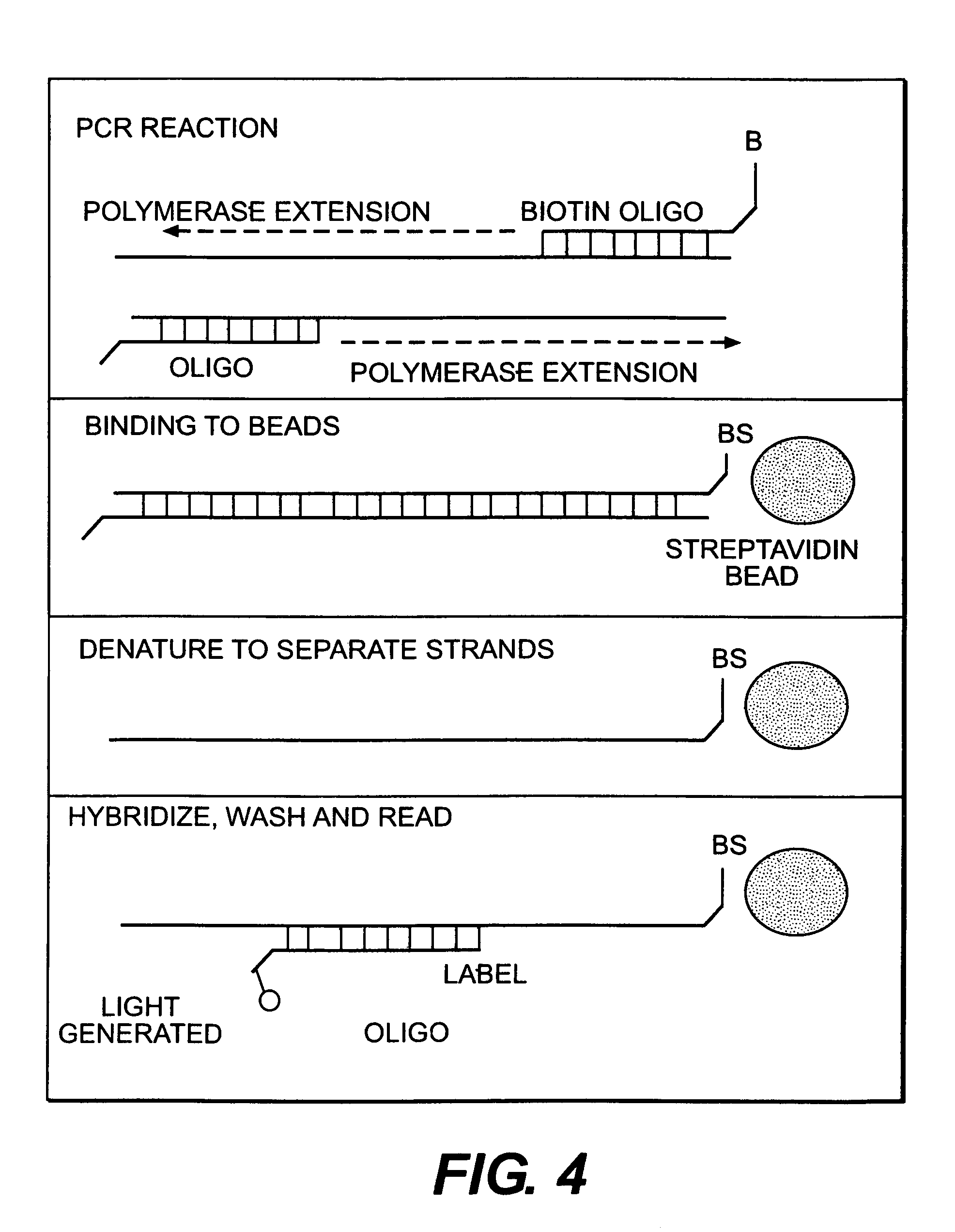Methods and apparatus for improved luminescence assays
a luminescence assay and luminescence technology, applied in the field of methods and apparatus for improving luminescence assays, can solve the problems of inability to use microparticulate matter in assays wherein luminescence phenomenon is measured, tunneling phenomenon can only operate for very short distances, etc., to achieve faster assay time, improve sensitivity, and improve sensitivity
- Summary
- Abstract
- Description
- Claims
- Application Information
AI Technical Summary
Benefits of technology
Problems solved by technology
Method used
Image
Examples
example 1
Apparatus and Method for Collection of Microparticles by Gravity
[0158]The measurement is conducted in a cell as shown in FIG. 12. References made to FIG. 12 which depict an apparatus for conducting an assay using the force of gravity. The components of the apparatus include a transparent window identified by reference numeral 11, a gasket identified by reference numeral 12, a block which includes an inlet 13, a working electrode 14, a counterelectrode 15 and an outlet port 16. The plane of the cell block is horizontal, i.e. perpendicular to the direction of the earth's gravitational field. Labeled microparticles (Dynal) in an ECL buffer are drawn to the cell by means of a peristaltic pump. The pump is turned off after the particles reach the cell. The microparticles in the cell chamber fall onto the working electrode surface. The rate of fall of microparticles is determined to be approximately constant at 0.5 mm / min over a distance of 10 mm, as shown in FIG. 13. The number of partic...
example 2
ECL Apparatus and Method for Deposition of Microparticles
Magnetic Collection using a Sedimentation Cell.
[0159]A cell for conduct of an assay using magnetic force to cause the microparticulate to settle is shown in FIG. 16. Reference numeral 21 refers to a transparent window, reference numeral 22 to a gasket, reference numeral 23 to the inlet in the cell block, reference numeral 24 to the working electrode, reference numeral 25 to the sample outlet, reference numeral 26 to the cell block itself and reference 27 to an electromagnet.
[0160]The plane of the cell block is oriented horizontally. Labeled microparticles (Dynal) in ECL buffer are drawn to the cell by means of a peristaltic pump. The pump is turned off after the microparticles reach the cell. The microparticles in the cell chamber are drawn to the working electrode by means of a magnetic field generated using electromagnet 27 operating at 12 volts and 1.5 amps. By application of the electromagnet, the rate of deposition of mic...
example 3
ECL Apparatus and Method for Deposition of Microparticles
Magnetic Collection using a Collection Cell.
[0161]An assay is carried out in a cell as described in FIG. 18. With reference to FIG. 18, reference numeral 31 refers to transparent window, reference numeral 32 to a gasket, reference numeral 33 to an inlet in the cell block, reference numeral 34 to a working electrode, reference numeral 35 to the cell block itself, reference numeral 36 to the sample outlet and reference numeral 37 to a permanent magnet.
[0162]The plane of the cell block is oriented horizontally. Labeled microparticles (Dynal) in ECL buffer are drawn to the electrochemical cell by means of a peristaltic pump. Prior to the sample introduction, permanent magnet 34 is positioned immediately below the working electrode / solution interface at a distance of 0.035 inches. As the sample is being drawn to the cell, the microparticles deposit onto an area over the working electrode, as defined by the area of the magnet. The p...
PUM
| Property | Measurement | Unit |
|---|---|---|
| distance | aaaaa | aaaaa |
| density | aaaaa | aaaaa |
| diameter | aaaaa | aaaaa |
Abstract
Description
Claims
Application Information
 Login to View More
Login to View More - R&D
- Intellectual Property
- Life Sciences
- Materials
- Tech Scout
- Unparalleled Data Quality
- Higher Quality Content
- 60% Fewer Hallucinations
Browse by: Latest US Patents, China's latest patents, Technical Efficacy Thesaurus, Application Domain, Technology Topic, Popular Technical Reports.
© 2025 PatSnap. All rights reserved.Legal|Privacy policy|Modern Slavery Act Transparency Statement|Sitemap|About US| Contact US: help@patsnap.com



